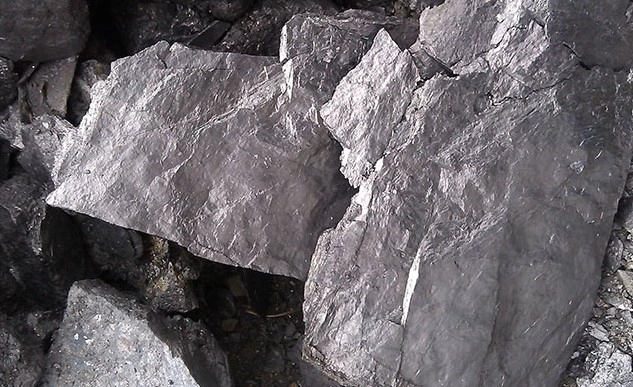
High temperature calcination method is a selection method that utilizes the difference in melting point of graphite. The melting point of graphite ore is very high, up to 3652 ℃, and the boiling point is 4250 ℃. When heating graphite ore to around 2700-3000 ℃, most of the impurities have already vaporized, achieving effective separation of graphite and impurities.
process flow
1.Raw ore crushing:Crushing graphite raw ore into smaller particles for the subsequent high-temperature roasting process.
2.Pre treatment:Necessary pre-treatment is carried out on the crushed raw ore, such as drying, screening, etc., to remove moisture and oversized or undersized particles.
3.High temperature roasting:Put the pre treated graphite ore into a high-temperature roasting furnace and heat it to 2700-3000 ℃. At this temperature, most impurity elements (such as silicon, aluminum, iron, etc.) will vaporize, while graphite remains solid.
4.Cooling and Collection:The roasted material needs to be cooled to room temperature before collection. During this process, graphite will remain solid, while impurities from gasification will be discharged into the atmosphere.
5.Post processing:The collected graphite may undergo further post-processing, such as mechanical wear, screening, etc., to remove possible residual small impurities.
Technological advantages
1.High purity purification:The high-temperature roasting method can purify graphite grade to 99.99% or even higher, making it very suitable for applications with extremely high requirements for graphite purity.
2.Selective Separation:By controlling the calcination temperature, effective separation of graphite and impurities can be achieved, improving the purity of graphite.
3.Strong adaptability:The high-temperature roasting method has relatively low purity requirements for graphite ore and can handle various types of graphite ore.
The high-temperature roasting method also has some disadvantages and needs to be noted
1.High energy consumption:High temperature roasting requires a large amount of heat, resulting in relatively high energy consumption and increased production costs.
2.High equipment requirements:The high-temperature roasting process requires very high equipment, requiring specialized equipment that can withstand high temperatures and chemical corrosion.
3.Environmental pollution:Impurities generated during the roasting process may cause environmental pollution, therefore an effective exhaust gas treatment system is required.
4.Safety Risk:There are safety risks in high-temperature operating environments, which require strict safety measures and emergency plans.
The graphite high-temperature calcination method is a method that can achieve high-purity purification, but it requires high energy consumption, high equipment requirements, and attention to environmental and safety risks. In practical applications, it is necessary to comprehensively consider costs, benefits, and environmental impacts to ensure the safety and environmental protection of the production process.
For more professional suggestions? Contact us!
Warm Tips:If you want to know more information, like quotation, products, solutions, etc.,
Contact: Pingheng
Tuxing Sun Mineral Processing Expert
Wechat/whatapp:+86 18092529083
Email:[email protected]
- Random article
- Popular articles
- Popular comments
- Magnetic separation and beneficiation process for bauxite
- Gold Mine Combined Beneficiation Process
- Gravity combined beneficiation process for black and white tungsten ore
- Gravity combined beneficiation process for wolframite ore
- Prioritized Flotation Process for Lead-zinc Ore
- Lead-zinc Ore Asynchronous Flotation Process
- Laterite Nickel Ore: Pyrometallurgical Treatment








Leave a message with your needs or comments
Add comment: